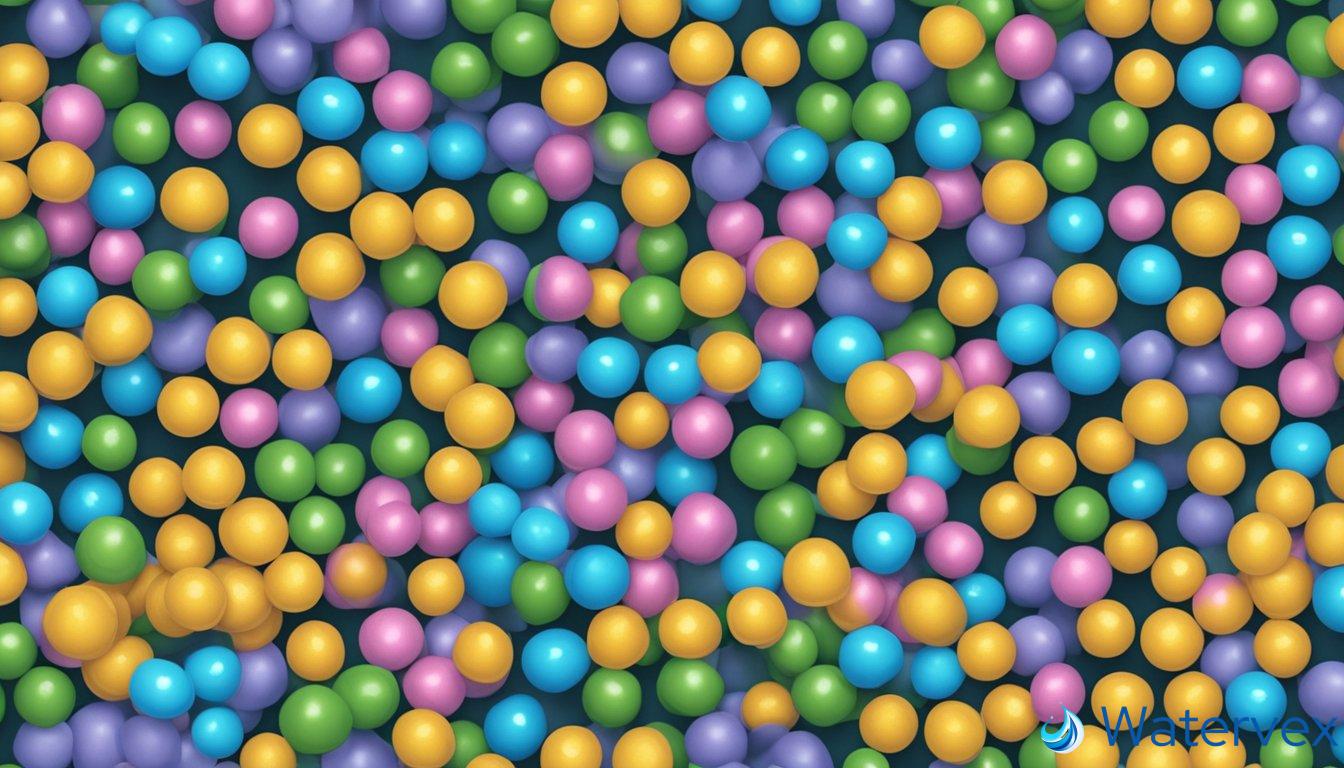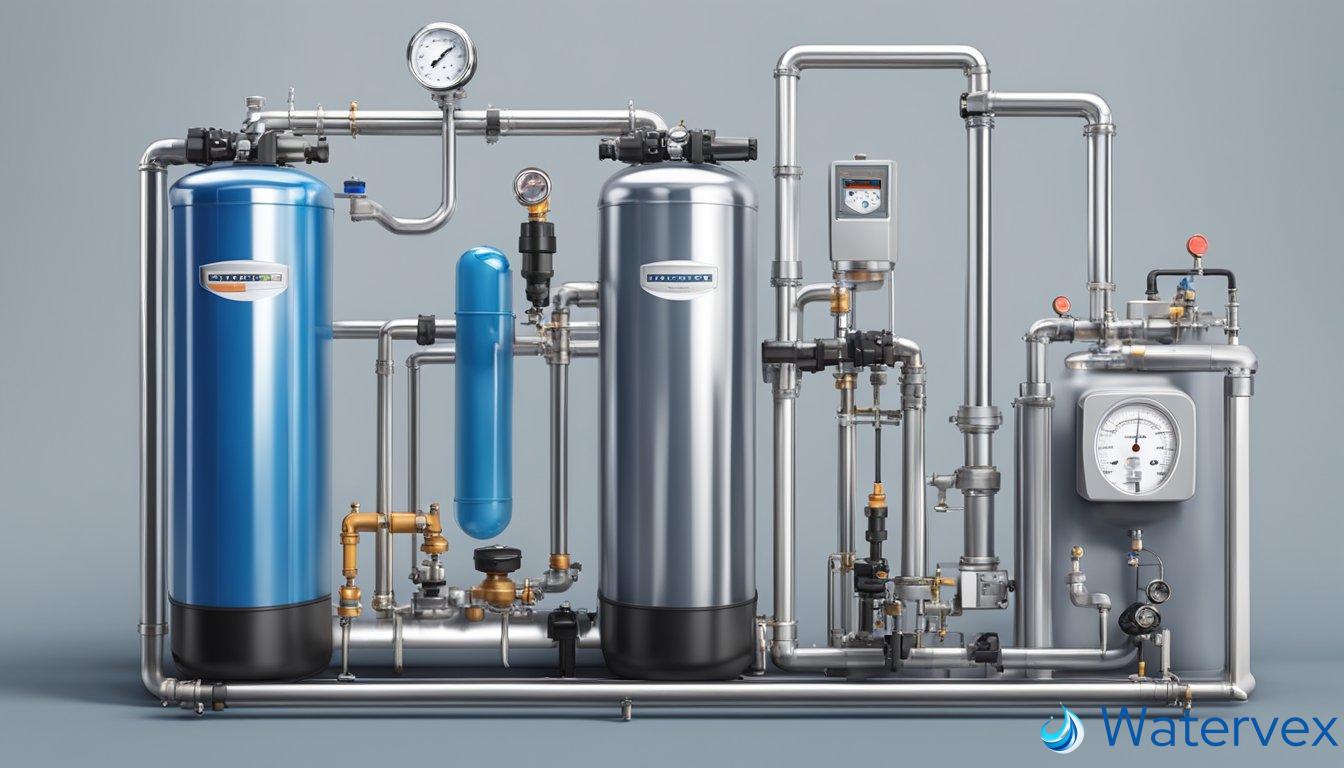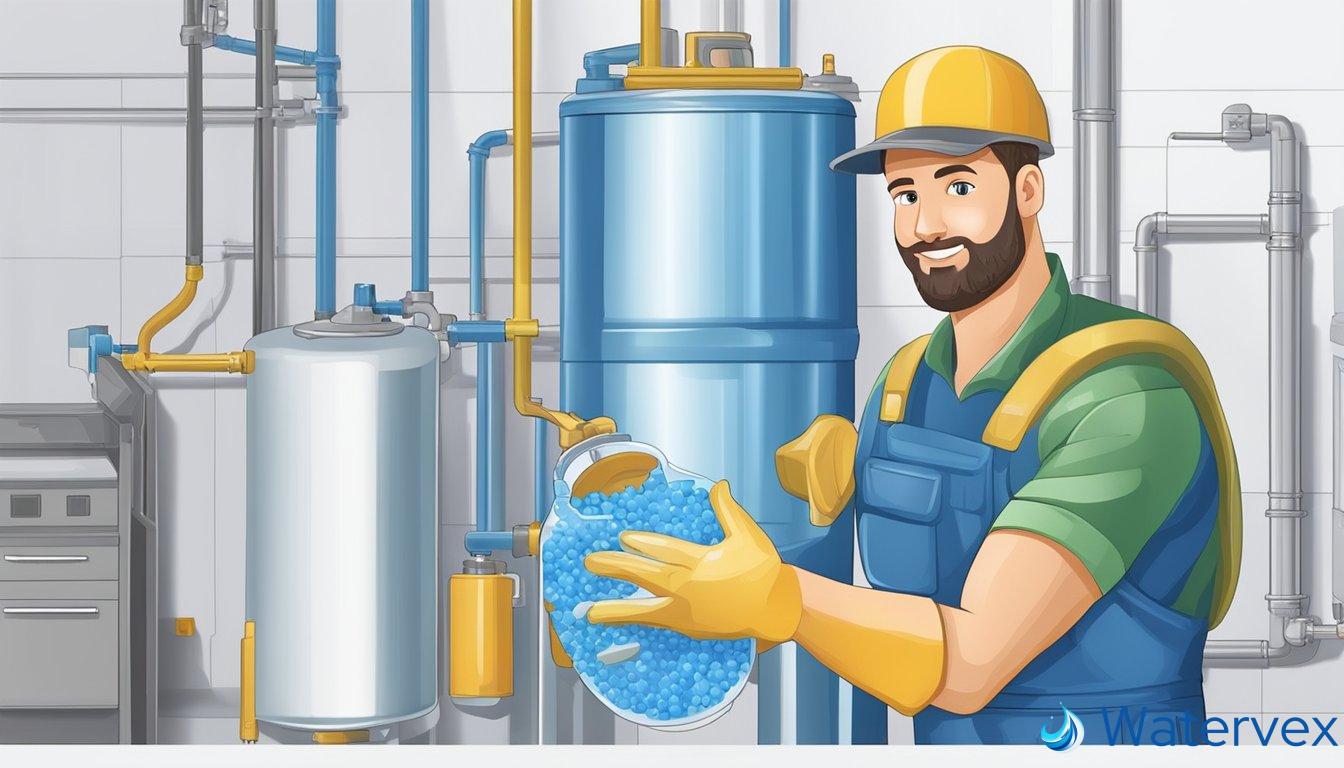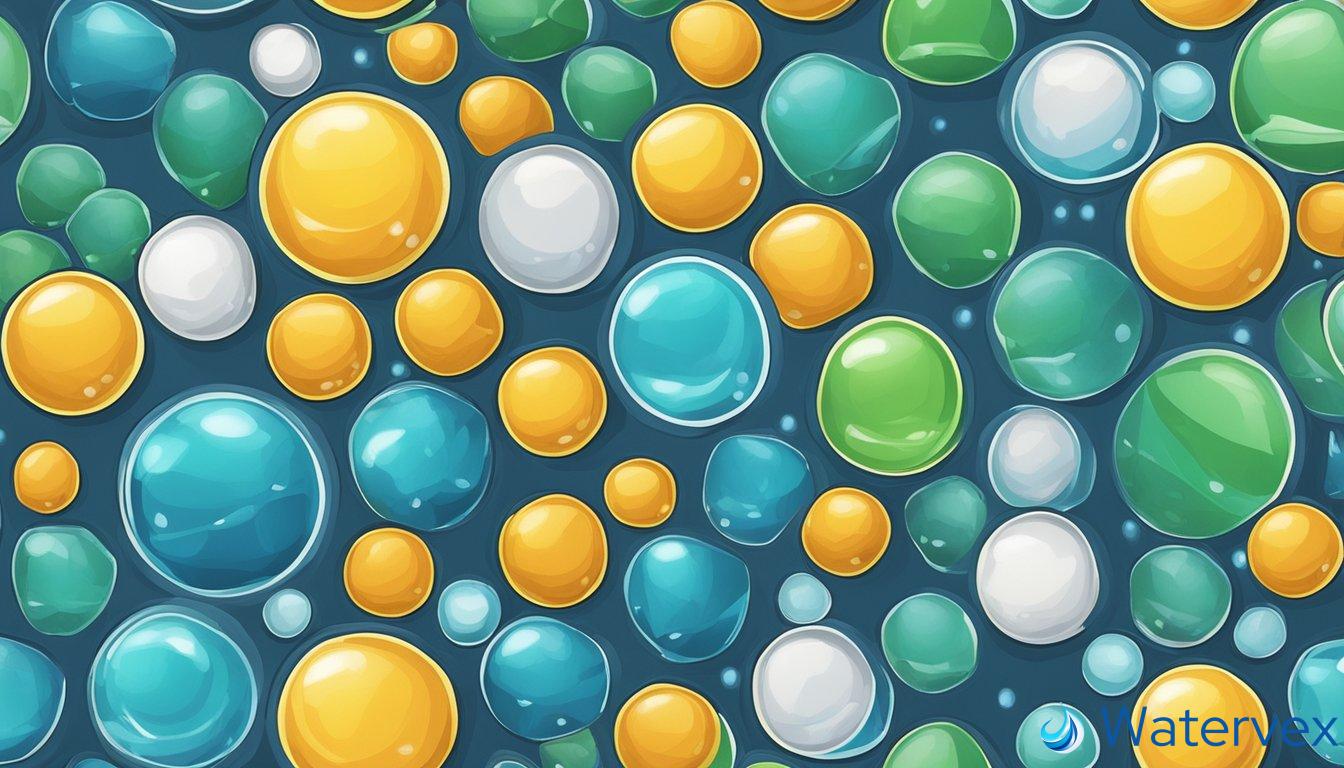Water softener resin beads play a crucial role in your home’s water quality by exchanging hard minerals like calcium and magnesium with sodium, resulting in soft water. The longevity of these resin beads is a matter of maintenance and quality, significantly affecting the efficiency of your softener and the condition of your plumbing. Higher quality resins, like those with a 10% crosslink, can remain effective for 15-20 years, while others may require replacement sooner.

Various factors can influence the lifespan of water softener resin, such as the presence of heavy metals, chlorine, and the overall hardness of the water. Proper maintenance, understanding when to replace the resin, and the addition of pre-treatment systems can also play a role in maximizing the efficiency and longevity of your water softener system.
Key Takeaways
- Water softener beads exchange hard minerals for sodium to soften water.
- Beads can last up to 15-20 years with proper maintenance and water conditions.
- The lifespan of resin beads can be extended by addressing factors that cause wear.
Understanding Water Softener Resin Beads
If you’re looking to extend the lifespan of your water softener system, understanding the resin beads within is critical. These tiny, powerful components are the heroes in the softening process, and proper knowledge about their composition and maintenance is key to ensuring your water quality remains high.
Composition and Function of Resin Beads
Resin beads are an essential component of your water softener. Consisting of polystyrene, these beads are charged with sodium ions and operate on ion exchange principles. As water passes through the resin bed, undesirable minerals like calcium and magnesium ions swap places with sodium ions, softening your water. The crosslink percentage of resin beads—often ranging from 6% to 10%—determines their durability and softening capacity.
Maintenance and Regeneration Processes
To keep your water softener running efficiently, routine maintenance is required. Over time, the resin beads lose their effectiveness as they become coated with minerals. Regeneration flushes out these minerals with a brine solution, recharging the beads with sodium ions. Depending on water usage, this regeneration cycle can happen automatically or may require manual regeneration. Using a resin cleaner can enhance the quality and longevity of the resin beads, ensuring that the system maintains its effectiveness in treating your water. Remember, diligent maintenance is the backbone of any efficient water conditioning system.
Factors Influencing Resin Bead Longevity

Understanding what affects the longevity of water softener resin beads ensures you make the most of your system. Let’s examine how different factors can determine their lifespan.
Impact of Water Composition
Water quality plays a pivotal role in the lifespan of your softener’s resin beads. Hardness minerals like calcium and magnesium are the primary targets of the ion exchange process, but high levels of these minerals can accelerate wear and tear. Additionally, dissolved iron—often found in well water—can coat and clog resin beads, diminishing their effectiveness. Regular testing of your water’s hardness and iron content is essential to anticipate when to replace the resin.
Resin Degradation by Chemicals and Physical Forces
Chemicals present in your water supply can also affect resin bead durability. Chlorine and chloramine commonly used for water disinfection, gradually degrade the polymeric structure of resin beads. Specifically, 10% crosslink resin tends to be more resistant to such chemicals compared to 8% crosslink resin, leading to an increased lifespan, often up to 15-20 years, under the right conditions. Physical factors, like water pressure, can also lead to physical wear and potentially fracture the beads. High-quality resin materials can be less susceptible to these physical forces. Regular maintenance and choosing the right new resin for your water softener are proactive steps to preserve its service life.
When and How to Replace Softening Resin

Proper maintenance of your water softener includes timely resin replacement to ensure your system operates efficiently and provides the best quality water for your home.
Determining the Right Time for Resin Replacement
The lifespan of softening resin typically ranges from 10 to 20 years, but various factors such as water usage, the presence of chlorine or iron in your water, and how often resin cleaners are used can affect this timeline. If you notice signs like a decrease in water pressure, changes in water quality, or resin beads surfacing in your water, it may be time to replace the resin. Additionally, consult your manufacturer’s recommendations to get specific guidance on when to replace resin for your particular model.
Steps for DIY Resin Replacement
Before you begin a DIY replacement, ensure you have all the necessary tools including a funnel, riser tube, and gravel. Follow these steps:
Isolate and Drain: Shut off the water supply and put your softener into bypass mode. Drain any remaining water from the brine tank and disconnect the unit.
Remove Old Resin: Take out the old softener resin, typically by unscrewing the control valve and removing the riser tube. Dispose of the old resin responsibly.
Add New Resin: With the riser tube secured, use a funnel to pour in new gravel—if your system requires it—followed by the new resin. Fill the tank according to the capacity recommended by your manufacturer.
Reattach and Regenerate: Reconnect the control valve and riser tube. Turn the water supply back on and initiate a manual regeneration cycle to remove any air or excess resin from the system.
While replacing resin can be cost-effective if you’re comfortable with minor plumbing, consider hiring a professional if you’re unsure or if your system contains a sediment pre-filter or other components that require special attention. Remember, regular maintenance can extend both the resin and water softener lifespan, ensuring optimal performance and safeguarding your home’s water quality.
Additional Considerations for System Efficiency and Maintenance

Water softener beads are essential for your system’s function, but aspects like water quality and system maintenance directly impact their longevity and efficiency.
Ensuring Consistent Water Quality
To maintain the efficacy of your water softener beads, it’s crucial to monitor water hardness levels regularly. Sudden changes can hint at problems, potentially shortening the lifespan of your resin beads. Installing a pre-filter can significantly reduce contaminants before they reach the softener, preserving bead integrity. Furthermore, be wary of high iron deposits, as they may necessitate specialized cleaning solutions to prevent damage to the beads and ensure that your drinking water remains free of unwanted minerals.
Preventing Potential System Failures
Regular check-ups can prevent inconvenient system failures. Keep an eye on water pressure, as fluctuations might indicate issues with the resin beads or the system itself. A decrease in pressure can be a symptom of limescale buildup or clogs. Leaks in your plumbing system could lead to a cascade of problems, potentially affecting plumbing fixtures and causing water damage. Lastly, be mindful of the electrical components of your water softener, ensuring they are functioning correctly to avoid malfunctions that could shorten the life of your resin beads.

